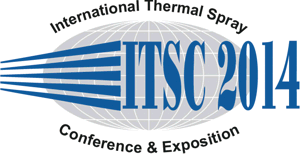
|
| Abstract No.: |
|
| Title: |
A HR-TEM study of the bonded splat interface microstructure of plasma sprayed YSZ coating
|
|
| Authors: |
Chang-Jiu Li* / Xi'an Jiaotong University, P.R. China
Er-Juan Yang / State Key Laboratory for Mechanical Behavior of Materials, Xi'an Jiaotong University, China
Guan-Jun Yang/ State Key Laboratory for Mechanical Behavior of Materials, Xi'an Jiaotong University, China
Cheng-Xin Li/ State Key Laboratory for Mechanical Behavior of Materials, Xi'an Jiaotong University, China
|
|
| Abstract: |
Thermally sprayed ceramic coating exhibits a layer structure remarkably different from conventionally processed materials. The splats are bonded at limited interface region with substantial unbonded interface zones. The microstructure at the bonded interface significantly influences coating properties and performance. It is known that plasma-sprayed YSZ coating consists of splat with columnar grains and meta-stable tetragonal phase. The splat interface bonding state which changes cooling rate during splat cooling may influence the interface microstructure. In this work, YSZ coating was deposited by atmospheric plasma spraying with substrate cooling during deposition. Subsequent characterization was implemented using high resolution transmission electron microscopy (JEM-2100F, JEOL) to examine the local microstructures near the interfaces at bonded zone. Results showed that the YSZ coating is mainly consists of typical columnar grain microstructure and exhibits meta-stable tetragonal phase. At the bonded zones, the top surface of the previously deposited splat acts as the nucleation sites for the next splat which solidifies by heterogeneous nucleation. Accordingly, it was observed that the epitaxial growth of columnar grains in some splats occurs across the interface. Moreover, distinct columnar grain size perpendicular to the bonded interface was observed. It was also found that high defect density is present at the bonded interface region. The effect of the interface microstructure on the coating properties is discussed.
|
|
